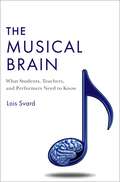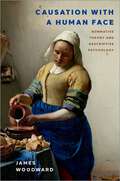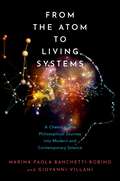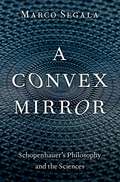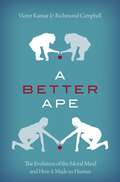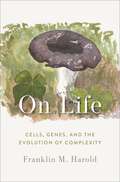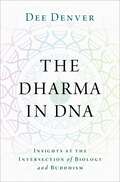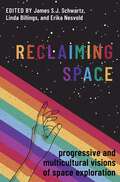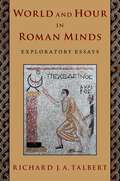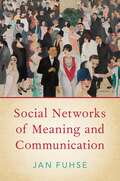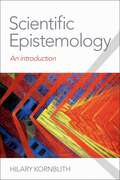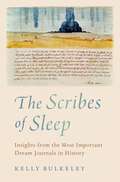- Table View
- List View
Environmental Biodynamics: A New Science of How the Environment Interacts with Human Health
by Manish Arora Paul CurtinIs there a central scientific theory governing how human physiology interacts with the environment? Our environment exerts a profound effect on our health and well-being. Yet, the rules guiding such interaction between individual human physiology and the environment remain elusive. While various disciplines have emerged studying components and base interactions of each system, no method has successfully predicted the dynamic behavior between these complex systems in real time. Environmental Biodynamics offers a daring new inquiry into our environment and its impact on human health. Moving beyond a reductionist view of human physiology and the environment, this volume proposes a fundamental shift in environmental health science from quantifying structural relationships, such as static measures of environmental factors or momentary health indicators, to studying functional interdependencies in time. Across six chapters, the authors weave together the latest research from biology, environmental science, theoretical physics, mathematics, and philosophy to explore their Biodynamic Interface Theory, which states that complex systems connect primarily through a dynamic, operationally independent interface that regulates the bidirectional interactions between systems over time. Later chapters compare the proposed theory against current practice and provide suggestions for further methods of data collection and computational analysis. Supported by vivid full-color diagrams and a wealth of original data, Environmental Biodynamics is an accessible theoretical guide to this promising new field of environmental health
The Musical Brain: What Students, Teachers, and Performers Need to Know
by Lois SvardWe make or listen to music for the powerful effect it has on our emotions, and we can't imagine our lives without music. Yet we tend to know nothing about the intricate networks that neurons create throughout our brains to make music possible. The Musical Brain explores fascinating discoveries about the brain and music, often told through the stories of musicians whose lives have been impacted by the extraordinary ability of our brains to learn and adapt. Neuroscientists have been studying musicians and the process of making music since the early 1990s and have discovered a staggering amount of information about how the brain processes music. There have been many books discussing neuroscience and music, but this is the first to relate the research in a practical way to those individuals who make or teach music. Research in mirror neurons, neuroplasticity, imagery, learning and memory, the musical abilities of babies, and the cognitive advantage of studying music can offer valuable insights into how and when we should begin the study of music, how we can practice and teach more effectively, how we can perform with greater confidence, and can help us understand why experiencing music together is so important in our lives. An accompanying website provides links to interviews, performance clips, demonstrations, photos, and essays involving the concepts or musicians discussed in the book.
The Musical Brain: What Students, Teachers, and Performers Need to Know
by Lois SvardWe make or listen to music for the powerful effect it has on our emotions, and we can't imagine our lives without music. Yet we tend to know nothing about the intricate networks that neurons create throughout our brains to make music possible. The Musical Brain explores fascinating discoveries about the brain and music, often told through the stories of musicians whose lives have been impacted by the extraordinary ability of our brains to learn and adapt. Neuroscientists have been studying musicians and the process of making music since the early 1990s and have discovered a staggering amount of information about how the brain processes music. There have been many books discussing neuroscience and music, but this is the first to relate the research in a practical way to those individuals who make or teach music. Research in mirror neurons, neuroplasticity, imagery, learning and memory, the musical abilities of babies, and the cognitive advantage of studying music can offer valuable insights into how and when we should begin the study of music, how we can practice and teach more effectively, how we can perform with greater confidence, and can help us understand why experiencing music together is so important in our lives. An accompanying website provides links to interviews, performance clips, demonstrations, photos, and essays involving the concepts or musicians discussed in the book.
Causation with a Human Face: Normative Theory and Descriptive Psychology (Oxford Studies in Philosophy of Science)
by James WoodwardThe past few decades have seen an explosion of research on causal reasoning in philosophy, computer science, and statistics, as well as descriptive work in psychology. In Causation with a Human Face, James Woodward integrates these lines of research and argues for an understanding of how each can inform the other: normative ideas can suggest interesting experiments, while descriptive results can suggest important normative concepts. Woodward's overall framework builds on the interventionist treatment of causation that he developed in Making Things Happen. Normative ideas discussed include proposals about the role of invariant or stable relationships in successful causal reasoning and the notion of proportionality. He argues that these normative ideas are reflected in the causal judgments that people actually make as a descriptive matter. Woodward also discusses the common philosophical practice-particularly salient in philosophical accounts of causation--of appealing to "intuitions" or "judgments about cases" in support of philosophical theses. He explores how, properly understood, such appeals are not different in principle from appeals to results from empirical research, and demonstrates how they may serve as a useful source of information about causal cognition.
Causation with a Human Face: Normative Theory and Descriptive Psychology (Oxford Studies in Philosophy of Science)
by James WoodwardThe past few decades have seen an explosion of research on causal reasoning in philosophy, computer science, and statistics, as well as descriptive work in psychology. In Causation with a Human Face, James Woodward integrates these lines of research and argues for an understanding of how each can inform the other: normative ideas can suggest interesting experiments, while descriptive results can suggest important normative concepts. Woodward's overall framework builds on the interventionist treatment of causation that he developed in Making Things Happen. Normative ideas discussed include proposals about the role of invariant or stable relationships in successful causal reasoning and the notion of proportionality. He argues that these normative ideas are reflected in the causal judgments that people actually make as a descriptive matter. Woodward also discusses the common philosophical practice-particularly salient in philosophical accounts of causation--of appealing to "intuitions" or "judgments about cases" in support of philosophical theses. He explores how, properly understood, such appeals are not different in principle from appeals to results from empirical research, and demonstrates how they may serve as a useful source of information about causal cognition.
From the Atom to Living Systems: A Chemical and Philosophical Journey Into Modern and Contemporary Science
by Marina Paola Banchetti-Robino Giovanni VillaniFrom the Atom to Living Systems represents an original historico-epistemological approach to follow the passage, in the microscopic analysis of reality, from the atomic to the molecular to the macromolecular levels and then to the threshold of life itself. Naturally, some parts of this journey have been developed in other works, some highly specialized and others of a more general nature. However, although this journey has often been traced in specialized scientific detail, the philosophical implications of the journey have not been discussed to any satisfactory degree. This scientific journey does have important philosophical consequences that constitute an integral part of this book, which is framed within the perspective of systems science and the so-called sciences of complexity, which are areas fundamental to 21st century science. In fact, the possibility of studying and understanding the material world through levels of complexity opens a great philosophical space that proposes to provide systemic and complex explanations, rather than reductive accounts that pretend to explain all phenomena through the interactions of elementary particles while considering all phenomena implicit and deterministic. The systemic and complex approach implies substituting unique bottom-up explanations, which move exclusively from the microscopically simple to the macroscopically complex, with a series of explanations that are horizontal within planes of complexity, vertically bottom up between various levels of complexity, vertically top-down, as well as circular in a manner that renders all levels of reality and the disciplines that study them as both autonomous and interconnected.
From the Atom to Living Systems: A Chemical and Philosophical Journey Into Modern and Contemporary Science
by Marina Paola Banchetti-Robino Giovanni VillaniFrom the Atom to Living Systems represents an original historico-epistemological approach to follow the passage, in the microscopic analysis of reality, from the atomic to the molecular to the macromolecular levels and then to the threshold of life itself. Naturally, some parts of this journey have been developed in other works, some highly specialized and others of a more general nature. However, although this journey has often been traced in specialized scientific detail, the philosophical implications of the journey have not been discussed to any satisfactory degree. This scientific journey does have important philosophical consequences that constitute an integral part of this book, which is framed within the perspective of systems science and the so-called sciences of complexity, which are areas fundamental to 21st century science. In fact, the possibility of studying and understanding the material world through levels of complexity opens a great philosophical space that proposes to provide systemic and complex explanations, rather than reductive accounts that pretend to explain all phenomena through the interactions of elementary particles while considering all phenomena implicit and deterministic. The systemic and complex approach implies substituting unique bottom-up explanations, which move exclusively from the microscopically simple to the macroscopically complex, with a series of explanations that are horizontal within planes of complexity, vertically bottom up between various levels of complexity, vertically top-down, as well as circular in a manner that renders all levels of reality and the disciplines that study them as both autonomous and interconnected.
A Convex Mirror: Schopenhauer's Philosophy and the Sciences
by Marco SegalaSchopenhauer is most recognizable as "the philosopher of pessimism," the author of a system that teaches how art and morality can help human beings navigate life in "the worst of all possible worlds." This dominant image of Schopenhauer has cut off an important branch of his tree of philosophy: the metaphysics of nature and its dialogue with the sciences of the time. A Convex Mirror sheds new light on the development of Schopenhauer's philosophy and his ongoing engagement with the natural sciences. Understanding Schopenhauer's metaphysics requires both an insight into his relationship with science and an appreciation of the role of the natural sciences in his philosophical project. In the first edition of The World as Will and Representation (1819), Schopenhauer dealt with science within the framework of Kant and Schelling's philosophies of nature, but his growing perplexity with them led him to an original, more complex conception of the relationship between science and metaphysics. He therefore embarked on a revision of his metaphysics of nature, which ultimately affected its core concepts--namely, the will and ideas--and influenced his decision to publish a volume of Supplements (1844) rather than a revised edition of his main work. The evolving relationship of Schopenhauer's philosophy to the natural sciences is a powerful interpretative tool: a "convex diffusing mirror" that reflects the totality and complexity of his system and sheds light on the core concepts of his philosophy, such as the systematic structure of his philosophy, reality and representation, idealism and realism, the polysemic nature of ideas, and the will as the thing in itself.
A Convex Mirror: Schopenhauer's Philosophy and the Sciences
by Marco SegalaSchopenhauer is most recognizable as "the philosopher of pessimism," the author of a system that teaches how art and morality can help human beings navigate life in "the worst of all possible worlds." This dominant image of Schopenhauer has cut off an important branch of his tree of philosophy: the metaphysics of nature and its dialogue with the sciences of the time. A Convex Mirror sheds new light on the development of Schopenhauer's philosophy and his ongoing engagement with the natural sciences. Understanding Schopenhauer's metaphysics requires both an insight into his relationship with science and an appreciation of the role of the natural sciences in his philosophical project. In the first edition of The World as Will and Representation (1819), Schopenhauer dealt with science within the framework of Kant and Schelling's philosophies of nature, but his growing perplexity with them led him to an original, more complex conception of the relationship between science and metaphysics. He therefore embarked on a revision of his metaphysics of nature, which ultimately affected its core concepts--namely, the will and ideas--and influenced his decision to publish a volume of Supplements (1844) rather than a revised edition of his main work. The evolving relationship of Schopenhauer's philosophy to the natural sciences is a powerful interpretative tool: a "convex diffusing mirror" that reflects the totality and complexity of his system and sheds light on the core concepts of his philosophy, such as the systematic structure of his philosophy, reality and representation, idealism and realism, the polysemic nature of ideas, and the will as the thing in itself.
A Better Ape: The Evolution of the Moral Mind and How it Made us Human
by Victor Kumar Richmond CampbellHumans are moral creatures. Among all life on Earth, we alone experience rich moral emotions, follow complex rules governing how we treat one another, and engage in moral dialogue. But how did human morality evolve? And can humans become morally evolved? In A Better Ape, Victor Kumar and Richmond Campbell draw on the latest research in the biological and social sciences to explain the key role that morality has played in human evolution. They explore the moral traits that humans share with chimpanzees; how a more complex moral mind enabled Homo sapiens to arise and out-compete other human species; and the place of morality alongside historic revolutions in technology and social organization. Throughout the book, Kumar and Campbell argue that morality co-evolved with intelligence and complex sociality. Morality prevents societal collapse and enables complex knowledge. After unearthing the ancient origins of human morality, Kumar and Campbell use evolutionary theory to deliver profound insights about how to advance moral progress and resist moral regress, such as reducing animal suffering on industrial farms; capitalizing on the recent revolution in gay rights to foster a nascent revolution in transgender rights; opposing intersectional inequality that impacts women and people of color in lower socioeconomic classes; and addressing major problems of global inequality, especially impending crises of injustice caused by anthropogenic climate change. Understanding how we evolved--and how we continue to evolve--can help us become a better ape.
A Better Ape: The Evolution of the Moral Mind and How it Made us Human
by Victor Kumar Richmond CampbellHumans are moral creatures. Among all life on Earth, we alone experience rich moral emotions, follow complex rules governing how we treat one another, and engage in moral dialogue. But how did human morality evolve? And can humans become morally evolved? In A Better Ape, Victor Kumar and Richmond Campbell draw on the latest research in the biological and social sciences to explain the key role that morality has played in human evolution. They explore the moral traits that humans share with chimpanzees; how a more complex moral mind enabled Homo sapiens to arise and out-compete other human species; and the place of morality alongside historic revolutions in technology and social organization. Throughout the book, Kumar and Campbell argue that morality co-evolved with intelligence and complex sociality. Morality prevents societal collapse and enables complex knowledge. After unearthing the ancient origins of human morality, Kumar and Campbell use evolutionary theory to deliver profound insights about how to advance moral progress and resist moral regress, such as reducing animal suffering on industrial farms; capitalizing on the recent revolution in gay rights to foster a nascent revolution in transgender rights; opposing intersectional inequality that impacts women and people of color in lower socioeconomic classes; and addressing major problems of global inequality, especially impending crises of injustice caused by anthropogenic climate change. Understanding how we evolved--and how we continue to evolve--can help us become a better ape.
On Life: Cells, Genes, and the Evolution of Complexity
by Franklin M. HaroldFranklin M. Harold's On Life reveals what science can tell us about the living world. All creatures, from bacteria and redwoods to garden snails and humans, belong to a single biochemical family. We all operate by the same principles and are all made up of cells, either one or many. We flaunt capacities that far exceed those of inanimate matter, yet we stand squarely within the material world. So what is life, anyway? How do living things function, and how did they come into existence? Questions like these have baffled philosophers and scientists since antiquity, but over the past half-century answers have begun to emerge. Offering an inside look, Franklin M. Harold makes life accessible to readers interested in the biological big picture. The book traces how living things operate, focusing on the interplay of biology with physics and chemistry. He asserts that biology stands apart from the physical sciences because life revolves around organization-- that is, purposeful order. On Life aims to make life intelligible by giving readers an understanding of the biological landscape; it sketches the principles as biologists presently understand them and highlights major unresolved issues. What emerges is a biology bracketed by two stubborn mysteries: the nature of the mind and the origin of life. This portrait of biology is comprehensible but inescapably complex, internally consistent, and buttressed by a wealth of factual knowledge.
On Life: Cells, Genes, and the Evolution of Complexity
by Franklin M. HaroldFranklin M. Harold's On Life reveals what science can tell us about the living world. All creatures, from bacteria and redwoods to garden snails and humans, belong to a single biochemical family. We all operate by the same principles and are all made up of cells, either one or many. We flaunt capacities that far exceed those of inanimate matter, yet we stand squarely within the material world. So what is life, anyway? How do living things function, and how did they come into existence? Questions like these have baffled philosophers and scientists since antiquity, but over the past half-century answers have begun to emerge. Offering an inside look, Franklin M. Harold makes life accessible to readers interested in the biological big picture. The book traces how living things operate, focusing on the interplay of biology with physics and chemistry. He asserts that biology stands apart from the physical sciences because life revolves around organization-- that is, purposeful order. On Life aims to make life intelligible by giving readers an understanding of the biological landscape; it sketches the principles as biologists presently understand them and highlights major unresolved issues. What emerges is a biology bracketed by two stubborn mysteries: the nature of the mind and the origin of life. This portrait of biology is comprehensible but inescapably complex, internally consistent, and buttressed by a wealth of factual knowledge.
The Dharma in DNA: Insights at the Intersection of Biology and Buddhism
by Dee DenverThere are more connections between spirituality and science than you might think... In 2004, biologist Dee Denver heard the Dalai Lama speak in Bloomington, Indiana. The famous Tibetan monk's speech that day exposed him to the centrality of impermanence in Buddhist thinking, a topic that directly connected to his mutation research in evolutionary biology. He left the event shocked and startled by the unexpected parallels between Buddhism and biology. This experience is not wholly unique to Denver. Spirituality and science are two inherently humane ways to approach our world. Why shouldn't more people look at them in tandem? In this book, Denver shares Buddhist ideas and the tradition's colonial and more recent interactions with biology. He then applies the scientific method to Buddhist principles and draws connections between Buddhist ideas and current research in biology. In doing this, he proposes a new approach to science, Bodhi science, that integrates Buddhist teachings and ethical frameworks. Denver's research supports a connected synergy between biological and Buddhist thinking. This scientific approach to Buddhism offers strong evidence supporting the validity of fundamentally Buddhist principles and logic. The book builds on historical evidence from Sri Lanka, Japan, and Tibetan Buddhism to illustrate these connections.
The Dharma in DNA: Insights at the Intersection of Biology and Buddhism
by Dee DenverThere are more connections between spirituality and science than you might think... In 2004, biologist Dee Denver heard the Dalai Lama speak in Bloomington, Indiana. The famous Tibetan monk's speech that day exposed him to the centrality of impermanence in Buddhist thinking, a topic that directly connected to his mutation research in evolutionary biology. He left the event shocked and startled by the unexpected parallels between Buddhism and biology. This experience is not wholly unique to Denver. Spirituality and science are two inherently humane ways to approach our world. Why shouldn't more people look at them in tandem? In this book, Denver shares Buddhist ideas and the tradition's colonial and more recent interactions with biology. He then applies the scientific method to Buddhist principles and draws connections between Buddhist ideas and current research in biology. In doing this, he proposes a new approach to science, Bodhi science, that integrates Buddhist teachings and ethical frameworks. Denver's research supports a connected synergy between biological and Buddhist thinking. This scientific approach to Buddhism offers strong evidence supporting the validity of fundamentally Buddhist principles and logic. The book builds on historical evidence from Sri Lanka, Japan, and Tibetan Buddhism to illustrate these connections.
Water Chemistry: The Chemical Processes and Composition of Natural and Engineered Aquatic Systems
by Patrick L. Brezonik William A. ArnoldWater Chemistry provides students with the tools needed to understand the processes that control the chemical species present in waters of both natural and engineered systems. After providing basic information about water and its chemical composition in environmental systems, the text covers theoretical concepts key to solving water chemistry problems. Water Chemistry emphasizes that both equilibrium and kinetic processes are important in aquatic systems. The content focuses not only on inorganic constituents but also on natural and anthropogenic organic chemicals in water. This new edition of Water Chemistry also features updated discussions of photochemistry, chlorine and disinfectants, geochemical controls on chemical composition, trace metals, nutrients, and oxygen. Quantitative equilibrium and kinetic problems related to acid-base chemistry, complexation, solubility, oxidation/reduction reactions, sorption, and the fate and reactions of organic chemicals are solved using mathematical, graphical, and computational tools. Examples show the application of theory and demonstrate how to solve problems using algebraic, graphical, and up-to-date computer-based techniques. Additional web material provides advanced content.
Water Chemistry: The Chemical Processes and Composition of Natural and Engineered Aquatic Systems
by Patrick L. Brezonik William A. ArnoldWater Chemistry provides students with the tools needed to understand the processes that control the chemical species present in waters of both natural and engineered systems. After providing basic information about water and its chemical composition in environmental systems, the text covers theoretical concepts key to solving water chemistry problems. Water Chemistry emphasizes that both equilibrium and kinetic processes are important in aquatic systems. The content focuses not only on inorganic constituents but also on natural and anthropogenic organic chemicals in water. This new edition of Water Chemistry also features updated discussions of photochemistry, chlorine and disinfectants, geochemical controls on chemical composition, trace metals, nutrients, and oxygen. Quantitative equilibrium and kinetic problems related to acid-base chemistry, complexation, solubility, oxidation/reduction reactions, sorption, and the fate and reactions of organic chemicals are solved using mathematical, graphical, and computational tools. Examples show the application of theory and demonstrate how to solve problems using algebraic, graphical, and up-to-date computer-based techniques. Additional web material provides advanced content.
Reclaiming Space: Progressive and Multicultural Visions of Space Exploration
Reclaiming Space is an innovative study of space travel's history, legitimacy, and future. The NewSpace movement that presently dominates spaceflight culture is characterized by distinctly Western, free-market capitalist values and associated with the space ambitions of the super-wealthy. This book exists to incubate, illuminate, and illustrate a more diverse and inclusive conversation about space exploration. Reclaiming Space asks: What would space exploration be like if we prioritized, or even simply acknowledged, the perspectives and value systems of individuals who are disabled, aren't white, aren't male, or aren't characteristically Western in their values? What can these perspectives teach us all about space exploration and its value (or even its potential for harm) that cannot be easily recognized or appreciated under the NewSpace status quo? And what should we be doing differently when it comes to space exploration? The twenty-seven original essays in this volume provide much needed perspective on space exploration by offering counterpoints to mainstream thinking about space. Essays address subjects such as the history and development of spaceflight culture, both within and outside the United States; the impact of science fiction and space art on how we conceptualize space; diverse cultural narratives and responses to space; and the ways space exploration might be leveraged in support of repairing injustices. Reclaiming Space also considers what our responsibilities might be as a spacefaring species in the distant future. Contributors include academics who research space exploration, spaceflight culture, space ethics, and space policy, as well as space artists and authors of award-winning science and speculative fiction. Written for space enthusiasts of all backgrounds, Reclaiming Space is an engaging, provocative volume of essays showcasing the perspectives of women, persons of color, and others who are typically left out of discussions of space exploration.
Reclaiming Space: Progressive and Multicultural Visions of Space Exploration
by James S. J. Schwartz, Linda Billings and Erika NesvoldReclaiming Space is an innovative study of space travel's history, legitimacy, and future. The NewSpace movement that presently dominates spaceflight culture is characterized by distinctly Western, free-market capitalist values and associated with the space ambitions of the super-wealthy. This book exists to incubate, illuminate, and illustrate a more diverse and inclusive conversation about space exploration. Reclaiming Space asks: What would space exploration be like if we prioritized, or even simply acknowledged, the perspectives and value systems of individuals who are disabled, aren't white, aren't male, or aren't characteristically Western in their values? What can these perspectives teach us all about space exploration and its value (or even its potential for harm) that cannot be easily recognized or appreciated under the NewSpace status quo? And what should we be doing differently when it comes to space exploration? The twenty-seven original essays in this volume provide much needed perspective on space exploration by offering counterpoints to mainstream thinking about space. Essays address subjects such as the history and development of spaceflight culture, both within and outside the United States; the impact of science fiction and space art on how we conceptualize space; diverse cultural narratives and responses to space; and the ways space exploration might be leveraged in support of repairing injustices. Reclaiming Space also considers what our responsibilities might be as a spacefaring species in the distant future. Contributors include academics who research space exploration, spaceflight culture, space ethics, and space policy, as well as space artists and authors of award-winning science and speculative fiction. Written for space enthusiasts of all backgrounds, Reclaiming Space is an engaging, provocative volume of essays showcasing the perspectives of women, persons of color, and others who are typically left out of discussions of space exploration.
World and Hour in Roman Minds: Exploratory Essays
by Richard J. TalbertWorld and Hour in Roman Minds: Exploratory Essays seeks to penetrate Romans' consciousness of space and time, aspects of antiquity currently attracting intense interest. Historian Richard Talbert presents here a cohesive selection of nineteen essays, published over the course of thirty years, all but one previously appearing in widely scattered publications. Now reinforced by an Introduction and textually and visually updated, these essays document the progress of pioneering efforts to glimpse the worldviews of Romans up and down the social scale--even Julius Caesar and Claudius--and to reassess the communicative role of Roman mapping along with its strengths and limitations. Talbert interprets the Antonine Itinerary and Artemidorus and Peutinger maps afresh, visualizing the latter with a wider perspective than in previous scholarship and probing the challenges of its design, production and copying. He also casts doubt, however, on the idea that Romans conceptualized their long-distance roads as an interconnected system, as did certain comparable premodern states across the Americas and Asia. The most recent essays share findings that emerge with a shift of focus from space to time, specifically Romans' daily timekeeping by hours--another neglected dimension of their social mentalité. Talbert suggests that Romans' tracking of time should be regarded as uncannily similar to that of the Japanese before Westernization. Throughout, the essays are unified by the methods applied. The value of broader, often comparative, approaches is demonstrated, as well as the creative potential of untapped testimony and digital technology--altogether an invaluable platform to stimulate further inquiry.
World and Hour in Roman Minds: Exploratory Essays
by Richard J. TalbertWorld and Hour in Roman Minds: Exploratory Essays seeks to penetrate Romans' consciousness of space and time, aspects of antiquity currently attracting intense interest. Historian Richard Talbert presents here a cohesive selection of nineteen essays, published over the course of thirty years, all but one previously appearing in widely scattered publications. Now reinforced by an Introduction and textually and visually updated, these essays document the progress of pioneering efforts to glimpse the worldviews of Romans up and down the social scale--even Julius Caesar and Claudius--and to reassess the communicative role of Roman mapping along with its strengths and limitations. Talbert interprets the Antonine Itinerary and Artemidorus and Peutinger maps afresh, visualizing the latter with a wider perspective than in previous scholarship and probing the challenges of its design, production and copying. He also casts doubt, however, on the idea that Romans conceptualized their long-distance roads as an interconnected system, as did certain comparable premodern states across the Americas and Asia. The most recent essays share findings that emerge with a shift of focus from space to time, specifically Romans' daily timekeeping by hours--another neglected dimension of their social mentalité. Talbert suggests that Romans' tracking of time should be regarded as uncannily similar to that of the Japanese before Westernization. Throughout, the essays are unified by the methods applied. The value of broader, often comparative, approaches is demonstrated, as well as the creative potential of untapped testimony and digital technology--altogether an invaluable platform to stimulate further inquiry.
Social Networks of Meaning and Communication
by Jan FuhseIn Social Networks of Meaning and Communication, Jan A. Fuhse offers a coherent theory of social structures as networks of relations interwoven with meaning. Drawing upon and extending the relational sociology of Harrison White and Charles Tilly, Fuhse seeks to establish a theory of social networks. Using a broad range of classic and contemporary social theory, he reconceptualizes social networks as constituted in patterns of expectations that form, reproduce, and change over the course of communicative events. These events, he argues, are the basic building blocks of the social world. They lead to expectations about the behavior of actors and their interaction with others the meaning structure making for observable regularities of communication in social networks. Social Networks of Meaning and Communication lays out a relational and constructivist perspective of social networks, highlighting a number of implications for social relationships, groups, and collective actors, as well as ethnic categories and cultural differences, roles and institutions, gender and family relations, and methods of social network analysis. Its framework bridges the gap in social network research between technically sophisticated analyses and complex, elusive theorizing.
Scientific Epistemology: An Introduction
by Hilary KornblithEpistemology has traditionally been motivated by a desire to respond to skeptical challenges. The skeptic presents an argument for the view that knowledge is impossible, and the theorist of knowledge is called upon to explain why we should think, contrary to the skeptic, that it is genuinely possible to gain knowledge. Traditional theories of knowledge offer responses to the skeptic which fail to draw on the resources of the sciences. This is no simple oversight; there are principled reasons why such resources are thought to be unavailable to the theorist of knowledge. This book takes a different approach. After arguing that appeals to science are not illegitimate in responding to skepticism, this book shows how the sciences offer an illuminating perspective on traditional questions about the nature and possibility of knowledge. This book serves as an introduction to a scientifically informed approach to the theory of knowledge. This book is a vital resource for students and scholars interested in epistemology and its connections to recent development in cognitive science.
Scientific Epistemology: An Introduction
by Hilary KornblithEpistemology has traditionally been motivated by a desire to respond to skeptical challenges. The skeptic presents an argument for the view that knowledge is impossible, and the theorist of knowledge is called upon to explain why we should think, contrary to the skeptic, that it is genuinely possible to gain knowledge. Traditional theories of knowledge offer responses to the skeptic which fail to draw on the resources of the sciences. This is no simple oversight; there are principled reasons why such resources are thought to be unavailable to the theorist of knowledge. This book takes a different approach. After arguing that appeals to science are not illegitimate in responding to skepticism, this book shows how the sciences offer an illuminating perspective on traditional questions about the nature and possibility of knowledge. This book serves as an introduction to a scientifically informed approach to the theory of knowledge. This book is a vital resource for students and scholars interested in epistemology and its connections to recent development in cognitive science.
The Scribes of Sleep: Insights from the Most Important Dream Journals in History
by Kelly BulkeleyDream journals are a surprisingly powerful resource for psychological and spiritual discovery. Contemporary dream science has shown that, as much as we can learn from single dreams, far more information can be derived from analyzing a series of dreams over time. Many have intuitively understood this point, and carefully recorded their dreams for years, even decades, drawing profound guidance from the patterns they discovered. The Scribes of Sleep is the first book to gather historical and cross-cultural evidence showing the value of dream journals as potent sources of healing, religious experience, and metaphysical insight. Dream researcher Kelly Bulkeley profiles seven remarkable people who kept dream journals: Aelius Aristides, Myoe Shonin, Lucrecia de León, Emanuel Swedenborg, Benjamin Banneker, Anna Bonus Kingsford, and Wolfgang Pauli. Because dreams are so complex and multi-faceted, especially when viewed in a series, Bulkeley employs an interdisciplinary approach to shed light on their meanings, drawing on data science, depth psychology, and religious studies. As the findings of these different methods are woven together and they begin to illuminate each other, it becomes clear that the practice of keeping a dream journal stimulates several specific qualities of religiosity, prompting the dreamers to move in more individualist, mystical, and pluralistic directions-towards becoming a free spirit.

